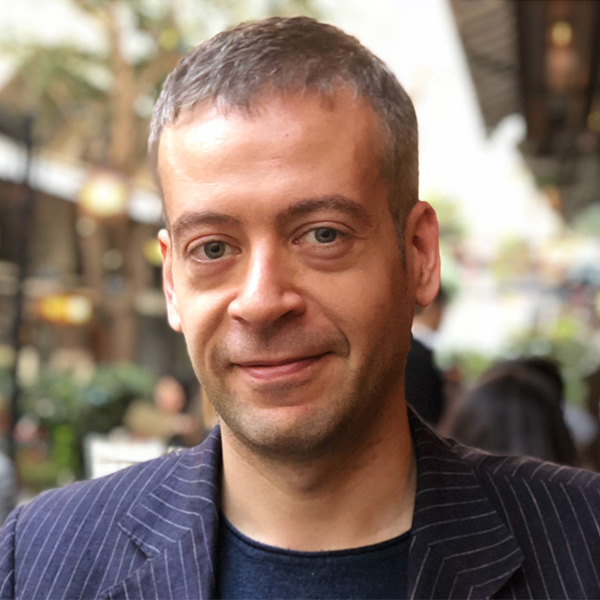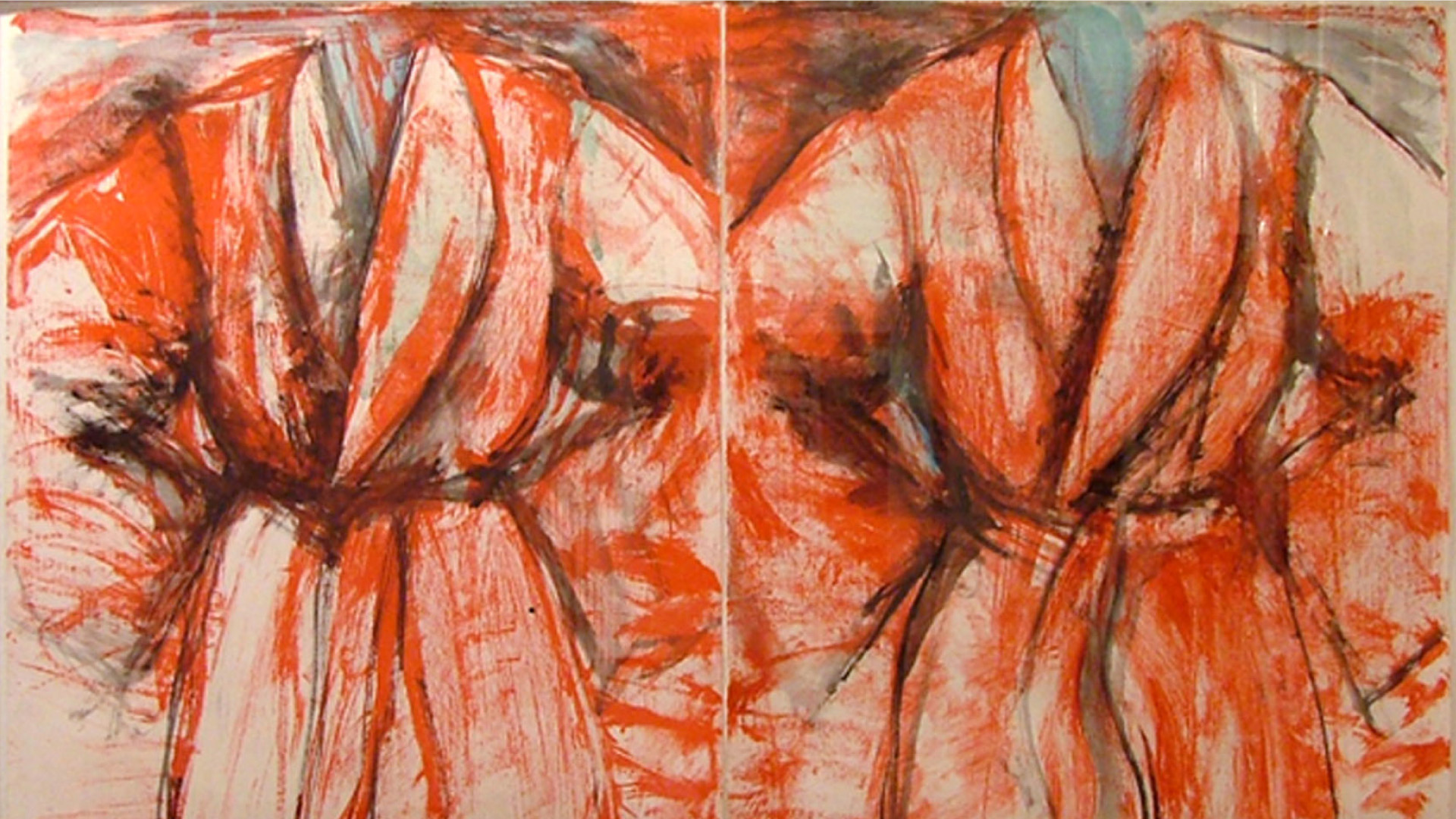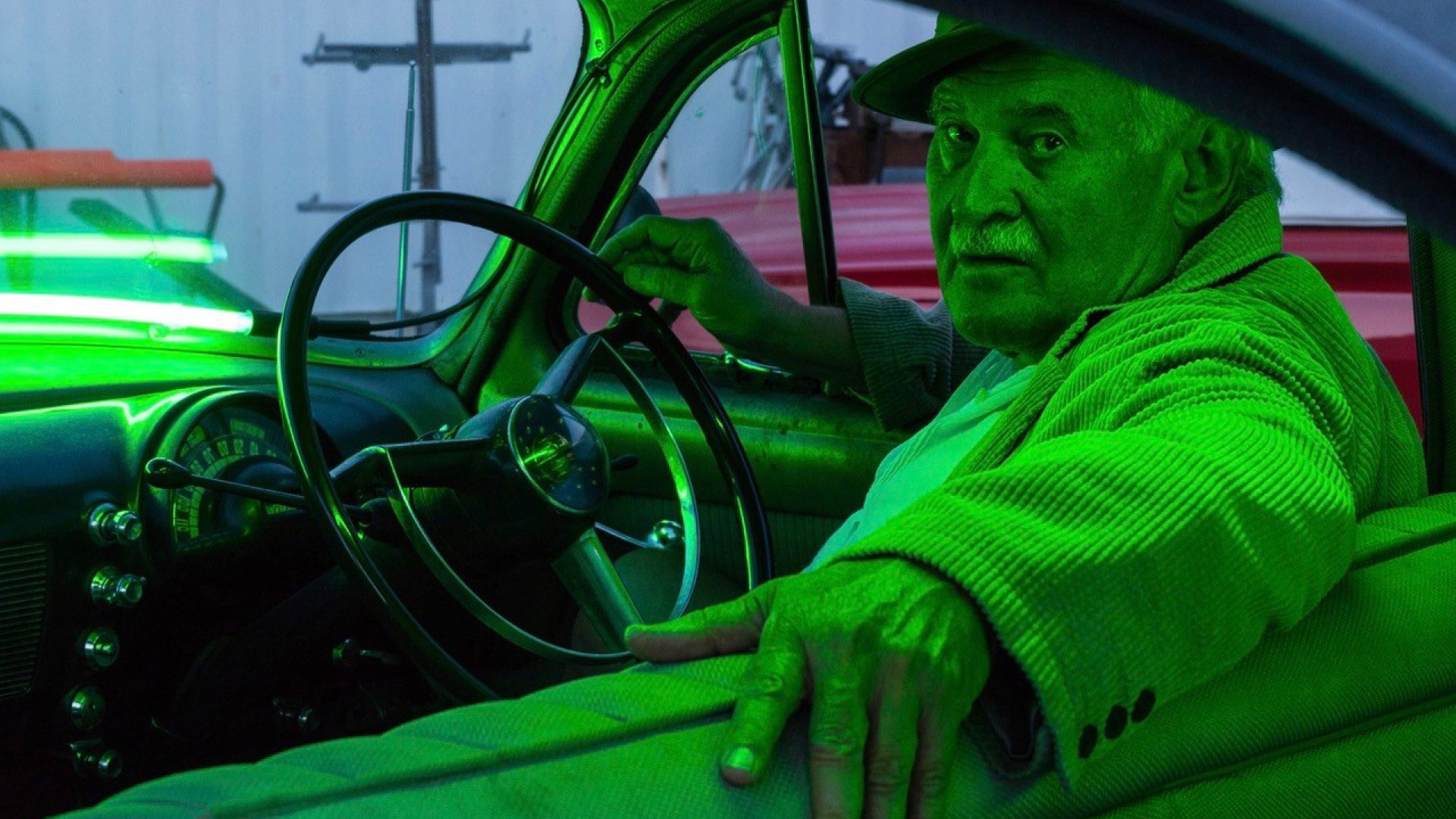Blog
“Usually ideas come from landscapes themselves”:
A conversation with Ellen Kooi
4 August 2020 Tue
Back in April, at the height of the Covid-19 epidemic, I discovered the work of Dutch photographer Ellen Kooi.
Her deserted landscapes intrigued me, and, as the virus spread, I kept returning to her figures who distance in a natural way. In May I called Kooi on Zoom. What follows is a transcript of our conversation, edited for length and clarity. — Kaya Genç
Kaya Genç: Where are you now?
I’m in Haarlem, a town near Amsterdam. It is located between the city and the sea. Nowadays it is beautiful here. I see empty streets and it is really nice to walk around. The lockdown is being partly lifted now and it is getting busier.
Ellen Kooi: Fellow photographers in Haarlem must be taking advantage of that.
Yes, I’ve seen beautiful pictures taken these days. If I go to fields and lakes it’s always in the early hours of the day. They’re usually empty when I take my walk. It seems like if I look at my own work, they’re a forecast of how life is now. This is also what I’ve heard from other people. One friend said: ‘Wow, you’ve forecasted this emptiness!’ I think that’s a recognition of how I relate to landscapes and what I recognise in them. It is not that I see the landscape differently now. For me the difference is not that big. When the weather is bad, landscapes are emptier and that is when I like to wander outside anyway.
If you look at some of my works, like those depicting young girls in fields, my figures are distant from one another. So they’re already like us. The landscape is deserted, and they’re distancing in a natural way.
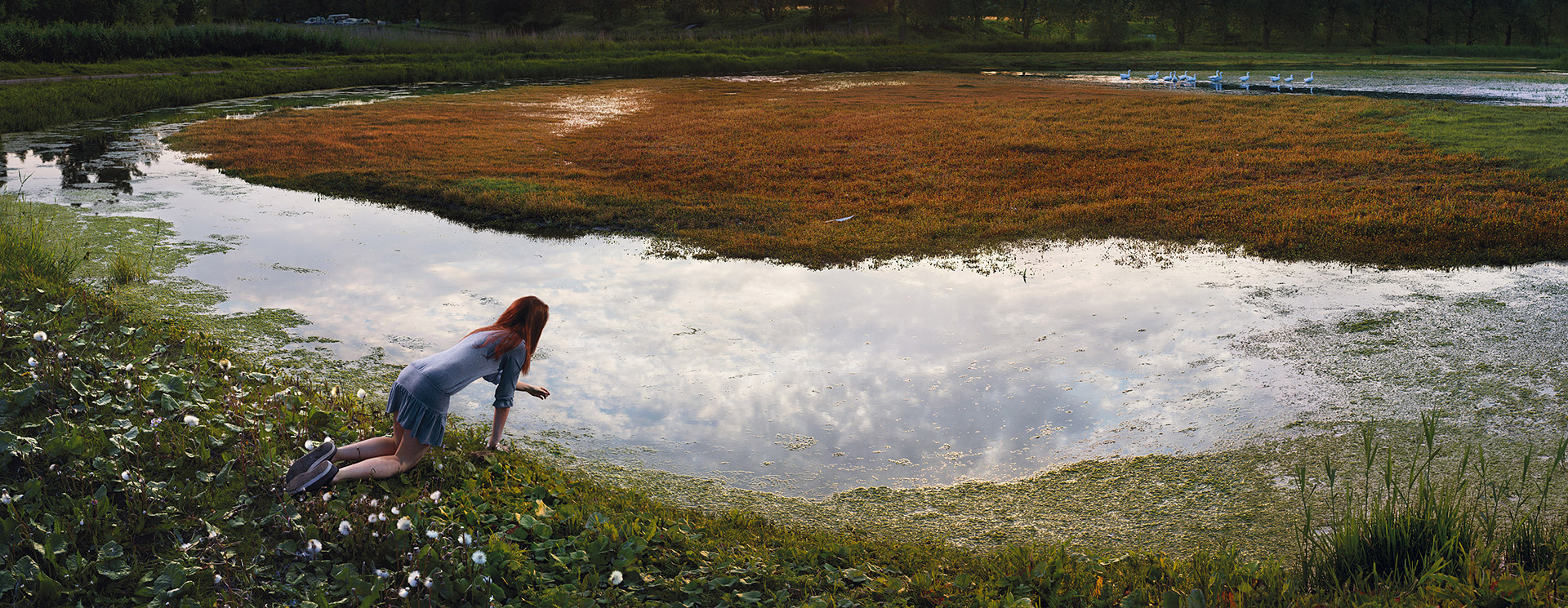
Ellen Kooi, Spaarndam-Wolken, 2011.
Fuji christal archive print, diasec dibond.
KG: I find their postures mysterious.
EK: I like the language of bodies and how people relate to each other. You can learn a lot of things about people in the way they choreograph their bodies. That has always been an influence on my work and I find it fascinating if I see people moving around in stores in a way that reminds me of dance. It is of course much more obvious indoors.
KG: You often shoot with the camera slightly above eye-level. You don’t use drones. I gather you don’t like their omnipotent vantage point. But during the Covid-19 crisis, drone footage of empty streets and landscapes flooded our screens. I wonder what you made of their perspectives.
EK: Drones don’t offer the most interesting point of view. I like to interpret how a person relates to a landscape. In drone views people are too small and you can’t relate to them. I’m interested in composition and form, in choreography and psychology. A protagonist’s reaction to her landscape—that’s the story I want to tell. I want figures in my photographs to guide you, or to reveal how I see that particular landscape. I don’t think I’ll use a drone soon. On the other hand it is fun to see drone-views of cities. They’re just not my thing.
KG: Speaking of psychology, there is a cinematic quality to your images, I think. They remind me of Alfred Hitchcock films which also explore psychology. I’m thinking of his The Foreign Correspondent (1940) where a crime reporter is reassigned to Europe to cover the war and travels to the Dutch countryside. In a classic scene he discovers a windmill rotating in the wrong direction. The reporter surmises that the man he’s looking for must be hiding inside. Hitchcock implies that the landscape often hides something from us. Do you ever think of your work in the language of cinema?
EK: I think so. It was not, in the beginning, a conscious decision. It was more like something that I found out was my language. It is also because I want to make a photograph a meaningful point in time, which suggests to viewers things that have happened before or came after it. In that sense my work is filmic.
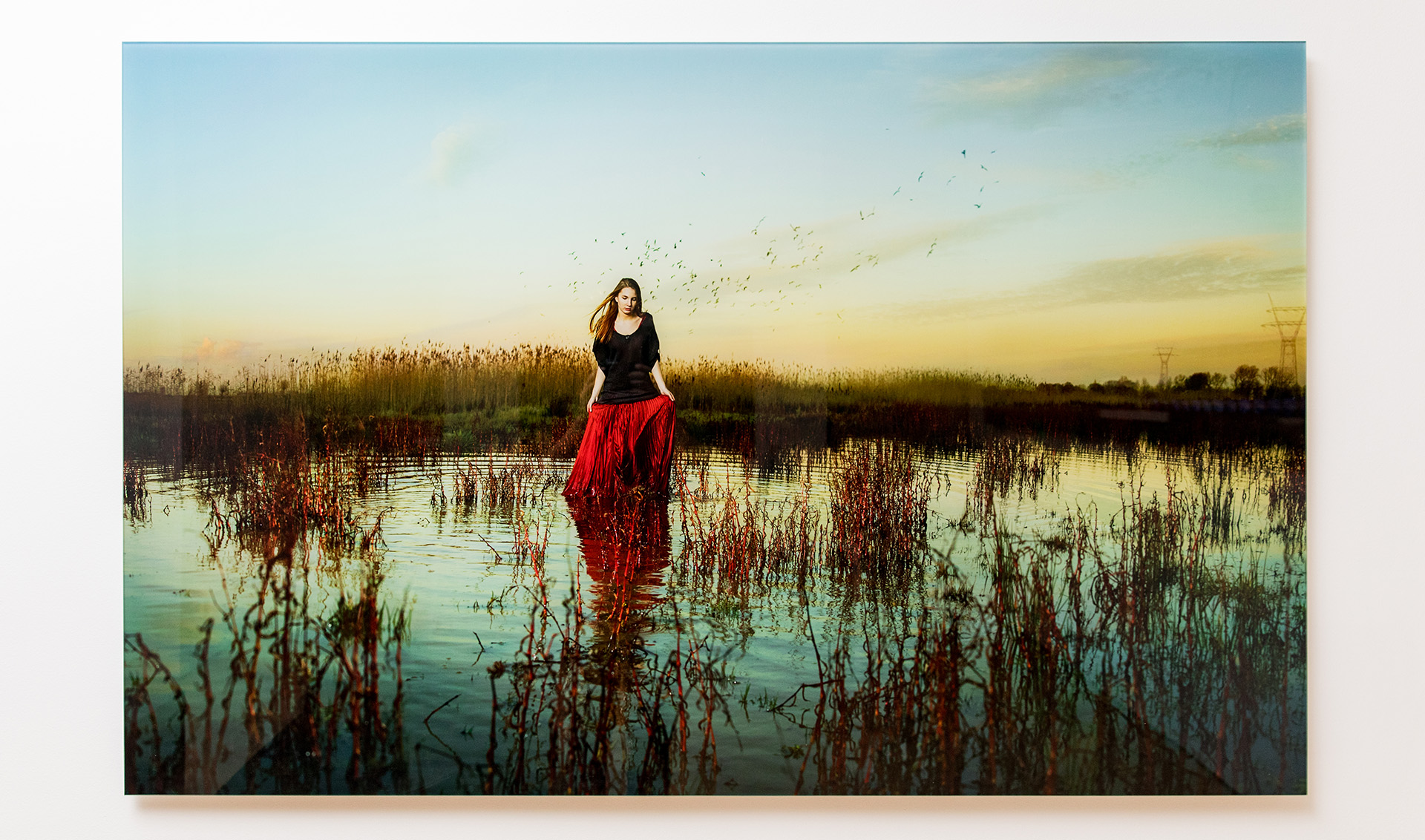
Ellen Kooi, Leiden - Lake, 2016.
100 x 158 cm. Fuji Crystal Archive print, diasec dibond.
KG: You photographed theatre productions when you first started out as a photographer. What kind of plays did you cover?
EK: The city where I lived had a small theatre. They commissioned me after they saw my exhibitions. And they wanted me to make posters for the plays. Theatre productions were interesting because I was photographing something which didn’t exist yet. So I talked with the director and read the play, and together we came up with ideas and they’d say “okay, let’s do that.” So this image would become the poster for the play.
Those theatre years influenced the way I made images. When I go outside, the experience turns into a theatrical image. I get very curious about seeing the view from a character’s perspective and so I make a photograph. There are ways of making landscape photographs: you can photograph a person in a studio, then photograph a landscape and combine the two on your computer. But I don’t want that. For me it is important to really see it—whatever it is—happen in the landscape.
KG: We live in interesting times: disease and decay surround us. You studied Dutch art, and I wonder your views on the way Dutch masters tackled these themes in the seventeenth century?
EK: Dutch masters didn’t depict the social aspect of plagues. Of course there has been numerous works about plagues in Dutch painting. They depict bird-like masks that Dutch people wore for health reasons. Those masks protected corpse-carriers from the disease. But those paintings don’t look into the consequences of plagues.
KG: What were you working on when the current epidemic began?
EK: It was a difficult time for me. I was working outside and I felt I was doing something illegal. Another difficulty concerned my models. I was afraid to infect them. My models were already stressed because of the pandemic, and by asking them to change this or that about their hair or postures, I feared stressing them further. Nowadays I work in projects that ponder family relations. In some cases my works tell stories; at others they are poems about image-making. But I don’t work on a single theme. I also make works that feature no humans. That is new for me. You can see some of those on my Instagram.
KG: Do you know the people who feature in your photographs personally? Are they professional models or acquaintances?
EK: When I conceive a landscape I think of someone who can be in the frame. It isn’t about a specific person. Usually ideas come from landscapes themselves. Recently I began photographing barren trees. I pivoted from night pictures to daylight scenes. I am also working with the sun, which used to be a no-go area for me. But that is changing. I make photographs of trees with very heavy shadows. I made a photograph of a man who is very tall and slim. In his shadow lies his son who is also very tall and slim. I use the sun and shadows to see how people come together in landscapes. In my works these particular people congregate because I know them personally. Perhaps I wouldn’t photograph these moments if I didn’t know those people.
There is a photograph with a daughter sitting on her father’s shoulders. It is this specific landscape, the lake, that allowed me to create that moment. We’ve had a lot of family outings there in the past. It is my favourite place on earth. I made four or five images there in the past. So the more often I go to that lake, the more ideas I get. I usually take my models to places that carry no meaning for them. But I wouldn’t say my models are symbols, because then you get into symbolism which is maybe a road I don’t want to follow.
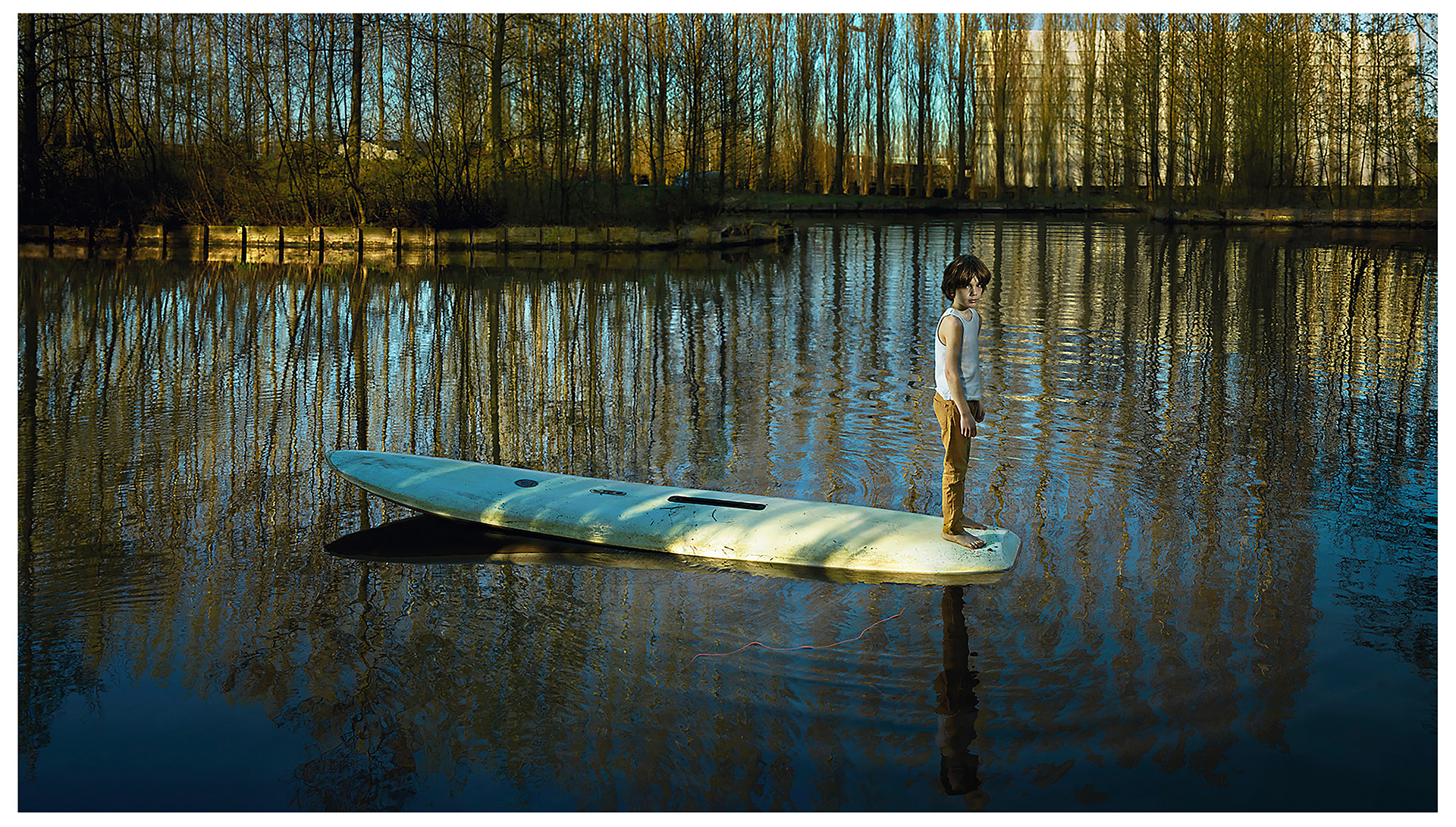
Ellen Kooi, Nieuwe Meer-Surfplank, 2018.
95 x 162 cm. Fuji Crystal Archive print, diasec dibond.
KG: These days governments advise citizens to live in ‘bubbles’—see your immediate family and relatives, but nobody else. It seems to me that when you use models in your photographs you also pick people from the same bubble.
EK: Yes. My models are people not from my own bubble. But they often come from the same bubble. This weekend I’ll make photographs with my own daughter and her boyfriend. We’ll go to a place that might be interesting. I feel restless these days and I want to make more works.
KG: Do you think the crisis will change the way we appreciate photography?
EK: I hope we’ll be able to gather again. Otherwise how do you meet new people? How do you get new influences? But I think a lot more of photography will be online, without receptions and parties. Maybe alarms will go off in galleries if visitors stand too close to each other. I hope one day we can interact again as artists and audiences. Otherwise life might become a bit dull.
ABOUT THE WRITER
Kaya Genç is a contributor to The New York Review of Booksand the author of Under the Shadow (I.B. Tauris), a ‘fascinating and informative compilation that represents both investigative and literary journalism at their finest’ according to Publishers Weekly. The Economist called Under the Shadow a ‘refreshingly balanced’ book whose author ‘has announced himself as a voice to be listened to’. The Atlanticpicked Kaya’s writings for the magazine’s ‘best works of journalism in 2014’ list. His writing has appeared in The New York Times, The Nation, The Paris Review, The Times Literary Supplement and The London Review of Books. Kaya holds a Ph.D. in English Literature. He is a critic for Artforum, and he gave lectures at venues including the Royal Anthropological Institute and appeared live on flagship programmes including Midday on WNYC and BBC’s Start the Week.
